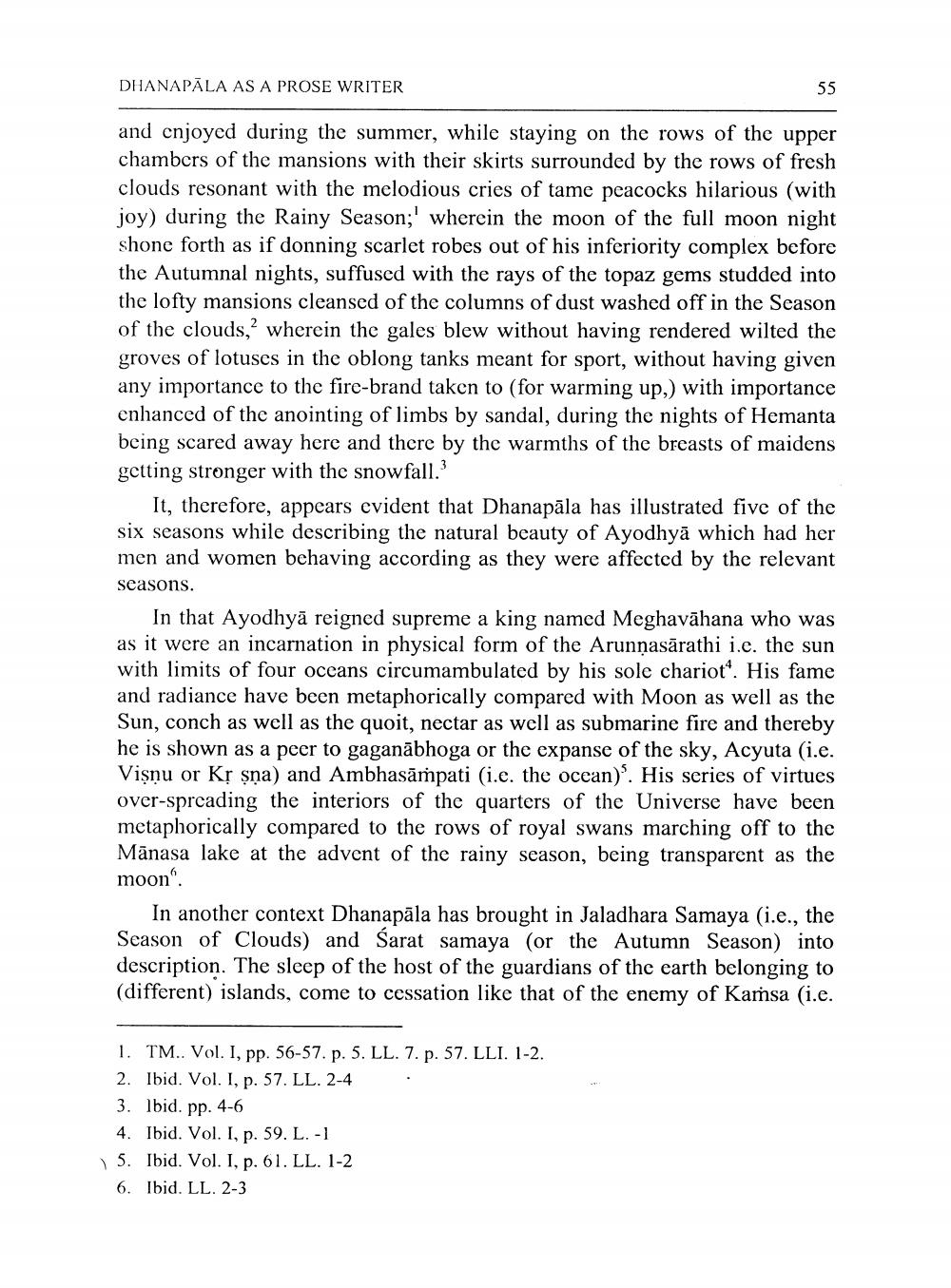________________
DHANAPĀLA AS A PROSE WRITER
55
and cnjoyed during the summer, while staying on the rows of the upper chambers of the mansions with their skirts surrounded by the rows of fresh clouds resonant with the melodious cries of tame peacocks hilarious (with joy) during the Rainy Season;' wherein the moon of the full moon night shone forth as if donning scarlet robes out of his inferiority complex before the Autumnal nights, suffused with the rays of the topaz gems studded into the lofty mansions cleansed of the columns of dust washed off in the Season of the clouds,? wherein the gales blew without having rendered wilted the groves of lotuses in the oblong tanks meant for sport, without having given any importance to the fire-brand taken to (for warming up,) with importance enhanced of the anointing of limbs by sandal, during the nights of Hemanta being scared away here and there by the warmths of the breasts of maidens getting stronger with the snowfall."
It, therefore, appears evident that Dhanapāla has illustrated five of the six seasons while describing the natural beauty of Ayodhyā which had her men and women behaving according as they were affected by the relevant seasons.
In that Ayodhyā reigned supreme a king named Meghavāhana who was as it were an incarnation in physical form of the Arunņasārathi i.e. the sun with limits of four oceans circumambulated by his sole chariot'. His fame and radiance have been metaphorically compared with Moon as well as the Sun, conch as well as the quoit, nectar as well as submarine fire and thereby he is shown as a peer to gaganābhoga or the expanse of the sky, Acyuta (i.e. Vişnu or Kș șņa) and Ambhasāmpati (i.e. the ocean)'. His series of virtues over-spreading the interiors of the quarters of the Universe have been metaphorically compared to the rows of royal swans marching off to the Mānasa lake at the advent of the rainy season, being transparent as the moon".
In another context Dhanapāla has brought in Jaladhara Samaya (i.e., the Season of Clouds) and Sarat samaya (or the Autumn Season) into description. The sleep of the host of the guardians of the earth belonging to (different) islands, come to cessation like that of the enemy of Kamsa (i.e.
1. TM.. Vol. I, pp. 56-57. p. 5. LL. 7. p. 57. LLI. 1-2. 2. Ibid. Vol. I, p. 57. LL. 2-4 3. lbid. pp. 4-6 4. Ibid. Vol. I, p. 59. L.-1 5. Ibid. Vol. I, p. 61. LL. 1-2 6. Ibid. LL. 2-3




